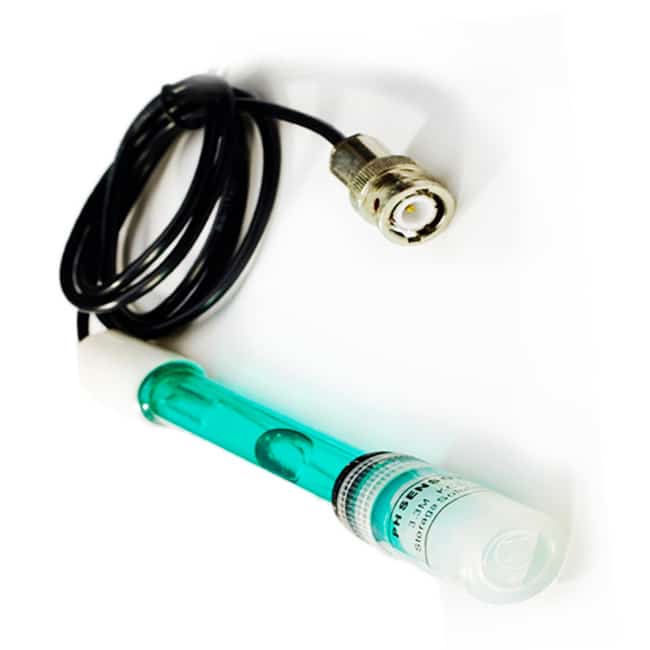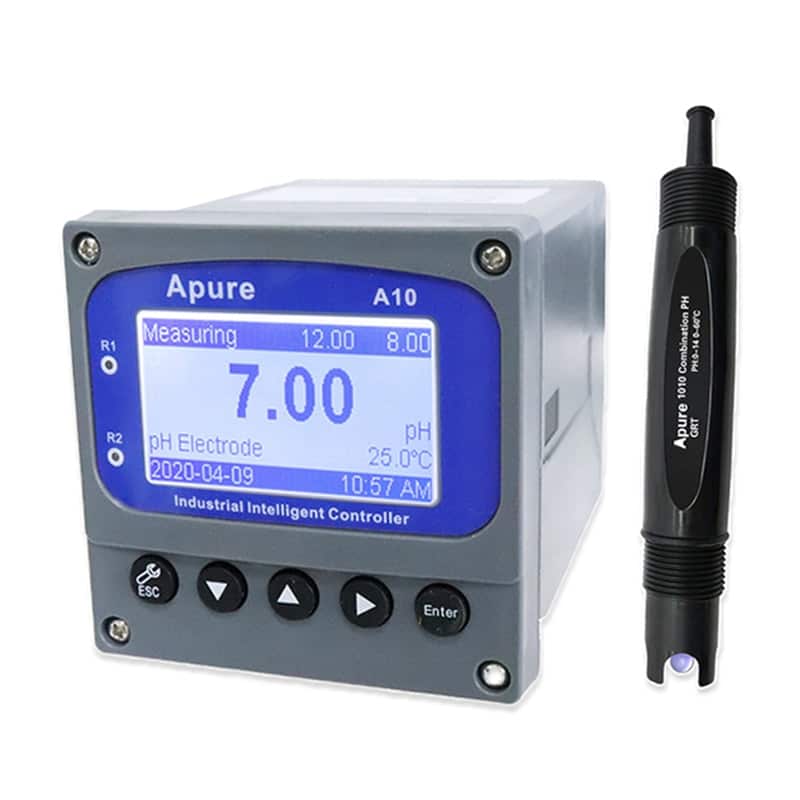Signs that the aquarium pH has dropped too low are algae growth, sludge/fouling at the bottom of the tank, and sudden changes in the appearance and behavior of the fish.
Potential hydrogen (pH) measures how acidic or basic/alkaline a solution is, with values ranging from 0-14, where 7.0 is neutral, <7.0 is acidic, and >7.0 is basic or indicates alkalinity.
It is important to measure the pH in your aquarium to know how acidic or alkaline the aquarium water is. Knowing the pH of your aquarium water is critical to the growth of your fish and their overall health.
While each aquatic species has a specific pH tolerance level, large fluctuations can be dangerous to fish and other life in the tank, so it is critical to know the symptoms of a low pH shock and how to recognize them, as low pH is associated with causing poor breathing and gill agitation in fish.
Symptoms of low pH in fish tank
If your fish tank has a low pH level, you may see the following symptoms.
Algae growth
Since algae thrive in slightly acidic water, algae growth is often the first sign of low pH in an aquarium. With more nutrients and available light, algae can spread like wildfire when the pH drops.
Although green algae is the most common type of aquarium algae, algae growth can also be brown or even dark in color.
If you find that the algae is out of control, your fish are more likely to get sick. Too much algae can also make it difficult for your fish to swim around the tank.

Dirt buildup at the bottom of the tank
When uneaten food sinks to the bottom of the aquarium, the dirt is often called “sludge” in the aquarium. As the food decomposes, it turns into a gray sludge because the bottom of the tank is an oxygen-deprived area.
While sludge may not seem like a problem, it can block water flow, clog tank filters, and release unpleasant odors into the tank, all of which can cause stress to your fish. To accurately measure the sludge concentration in water you can use a sludge concentration meter or sludge concentration sensor.
If you leave sludge in the tank, it will quickly build up and the problem will get worse. However, when removing it, be careful not to remove too much as sludge contains beneficial bacteria for your tank, which actually helps with overall water quality.
Stressed fish
When the pH level in the tank is too low, the fish can easily get stressed. Low pH reduces your fish’s ability to swim, eat, reproduce and grow – everything it must do to survive. If your fish become stressed, they will seem sluggish and often sleep more than usual.

Fish lying on the bottom of the tank or hanging out on the surface of the water
When fish spend most of their time at the bottom of the tank or near the surface, it indicates that they are having difficulty breathing in acidic conditions.
Acidic conditions make it difficult for your fish to absorb oxygen through their gills. The difficulty in breathing due to lack of oxygen causes them to be naturally drawn to the top or bottom of the tank.
Pale fish
When fish become paler than usual, this is a classic example of a drop in alkalinity. When this happens, your fish’s metabolism immediately slows down and their bodies are subjected to autophagy; an adaptation that prevents nutritional starvation (self-feeding). When this happens, your fish’s cells begin to break down and they look paler than normal.
If this happens to your fish, don’t worry too much – it’s a normal process as they try to adapt to their changing environment. As alkalinity levels increase, your fish will soon recover.
The average fish tank should have an alkalinity level of 5.5-7.5 for freshwater tanks and 8.0-8.1 for saltwater tanks.

Symptoms of high pH in fish tanks
You should also be aware of the symptoms associated with high pH levels in your tank.
- White spots on the fish, called Ich.
- Fish rubbing on rocks/substrate.
- Green algae and slime in the tank.
- Sluggish behavior of the fish.
- Fish move uncontrollably and swim erratically.
- Fish panting heavily at the surface of the water.
Causes of Low pH in Fish Tanks
If you are already an experienced aquarium hobbyist, you know how difficult it can be to replicate your fish’s water needs. Many of the elements that affect pH in the wild can also affect the pH level in your aquarium.
Problems associated with low pH in aquariums are described below.
- Too many fish
- Overfeeding
- Inadequate tank circulation
- Dirty tanks
- Water source during water changes
- Decaying fish
- Contaminated or sick fish
- Aquarium gravel/substrate hiding waste
- Not enough plants
How do I test and monitor the pH level in my fish tank?
Maintaining water quality is key to keeping your fish alive in the tank. Tap water can have a different pH than its neighbors, so testing the water and knowing how to change it is important to reduce stress in the aquarium.
It is recommended that some aquarium water be moved into a separate container and aerated with an air stone for a few days prior to testing. This is because the “true” pH will be suppressed by the CO2 (carbon dioxide) level in the tank, resulting in a lower pH reading than the actual value. You do not want to try to adjust the pH too early as this may further complicate your low pH problem.
The most accurate way to measure pH in your aquarium is to use a pH probe/sensor connected to a pH meter. There are many different types of pH sensors available, however, it is recommended to use an everyday pH sensor such as the Apure PHK pH sensor (or the A10 ph controller if you are looking for a high precision monitoring kit).
For high precision measurements, it is recommended that you calibrate your pH probe before each use.
Alternatively, you can use pH test strips, also known as litmus paper. These are a very inexpensive and easy way to test the pH in your tank, however, they are not as accurate as a pH meter.
Since pH levels can change during the day, you should always test pH levels in the morning or evening.
Although dissolved oxygen (DO) does not directly affect pH because there is no physicochemical link between the two, in some cases there is an indirect relationship with external factors, such as additional nutrients that increase algae growth, so it is also recommended that you use DO probes and sensors to measure DO levels in your tank.
How do I adjust the pH of my tank?
It is recommended that you try to acclimate your fish to the pH level already in the tank before you start “fiddling” with the pH level. However, some people prefer to increase or decrease the pH to exactly match the recommended value for that fish.
Ways to safely raise the pH of your tank
Changing the water
Water changes are something that every aquarium hobbyist should already be very familiar with. The most effective way to raise the pH level of your tank is to do regular water changes and fill it up with tap water and water conditioner.
If you do not do regular water changes, it is recommended that you only do a small number of water changes rather than one big change as this will reduce the chance of your fish suffering from shock.
Add rocks and more substrates
Everyone loves aquascaping! One aesthetically pleasing way to increase the pH of your tank is to add more rocks or substrate to your aquarium.
Crushed coral is a great choice! However, if you can’t find any crushed coral, limestone will do the same thing because coral is made up of calcium carbonate, similar to limestone. Remember to always add limestone or crushed coral gradually, as this method can quickly increase the pH of the water if overused.
Adding shells is another easy way to increase the pH of the water in your tank and give it a “mini ocean look”.
Increase Oxygen Levels
By increasing the oxygen (O2) levels in your tank, the water will become more aerated and therefore the carbon dioxide (CO2) levels will decrease.
We recommend checking your aeration equipment, as very large tanks require more powerful equipment than the basic equipment on the market. For best results, check your dissolved oxygen and understand how it affects water quality.
Home remedies
One common method is to use baking soda. While you should not try to use over-the-counter medications to buffer your tank, some hobbyists have used this method successfully.
Adding chemicals
As a last resort, you can try adding chemicals such as chemical buffers.
This is not recommended unless you are really struggling, as adding chemicals can cause a significant increase in pH, and usually, chemical treatments are a temporary solution to the problem.
However, if you do choose this option, always use a product that is safe to buffer and that you know will not amplify your water chemistry problems.
Ways to safely lower pH in your aquarium
Lowering the pH in your tank is often more difficult than trying to raise it, but there are still a few tricks you can do to lower the pH in your aquarium.
Filtering peat moss
First of all, we recommend that you get in touch with some peat moss. Filtering peat moss is the most successful way to lower the pH of your aquarium.
Some fishermen also use peat moss in their substrate or add it to mesh bags. However, please note that your water may temporarily discolor, but don’t worry, this will go away soon.
Adding wood
Adding wood like driftwood will also lower the pH of the water. Not only will wood help lower the pH level in your tank, it will look great and your fish will love the extra hiding space and area to explore!
Increase CO2 levels and add reverse osmosis water
Pumping or increasing CO2 levels (through plants) or adding RO (reverse osmosis) water is also an easy way to lower pH.
Conclusion
In general, every fish tank should have a neutral pH (7.0). If this value drops too low or rises significantly, it may be dangerous for the health of the fish and damage the water quality in the aquarium.
However, stability is the key factor here. Fish can adapt to pH values that deviate slightly from that range. It is the large fluctuations in pH that cause fish stress and death.
If you have any questions about the pH probes we offer, or are interested in other water quality monitoring instruments, please feel free to contact Apure’s professional level team.
More articles on water quality:
Distilled Water vs Purified Water: What’s The Difference?
3 Main Water Quality Parameters Types
Solution of water pollution
Free chlorine vs total chlorine



